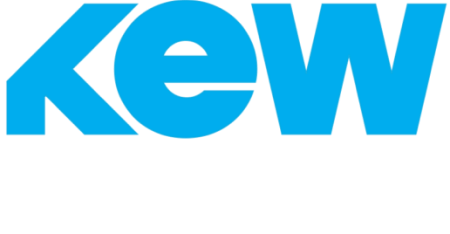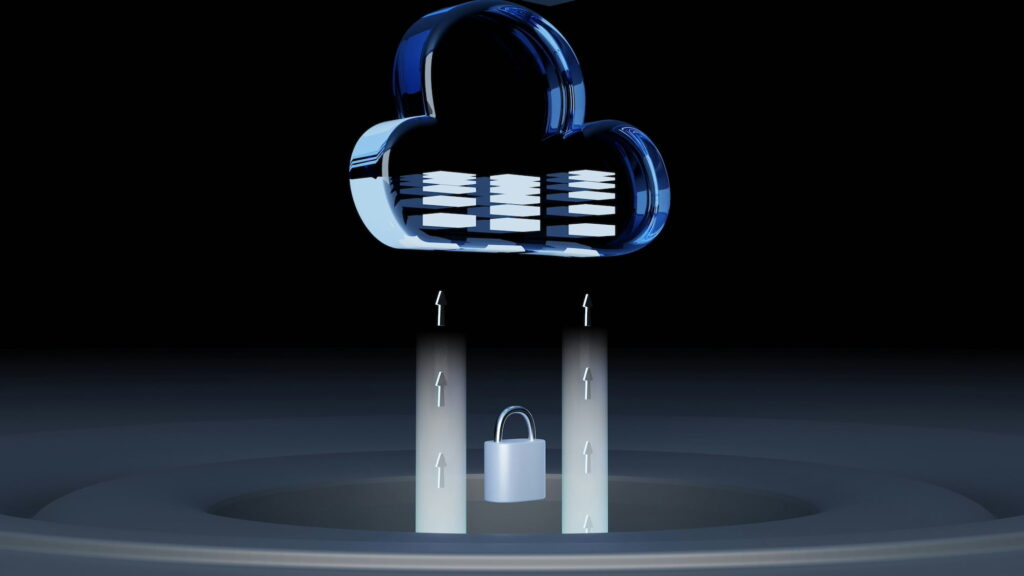Cloud migration has become a pivotal strategy for businesses aiming to enhance efficiency, scalability, and innovation. Migrating to the cloud involves transferring data, applications, and other business elements from on-premises infrastructure to cloud environments. This shift not only offers cost savings but also ensures that businesses can leverage advanced cloud computing technologies. However, a successful cloud migration requires careful planning and execution.
Preparing for Cloud Migration
Assessing Your Current Infrastructure:
Conducting a Full Audit of Your Existing Systems
Before embarking on your cloud migration journey, it is essential to conduct a thorough audit of your existing IT infrastructure. This includes assessing all hardware, software, applications, and data currently in use. Understanding what you have and how it functions will help identify potential challenges and dependencies that might affect the migration process.
Identifying Legacy Systems and Potential Challenges
Legacy systems can pose significant obstacles during cloud migration. These systems may not be compatible with modern cloud environments or might require substantial modifications. Identifying these potential challenges early allows your team to plan accordingly and mitigate any issues that arise.
Defining Your Cloud Strategy:
Choosing Between Public, Private, and Hybrid Cloud
One of the first crucial steps in your cloud migration strategy is to decide which type of cloud environment best suits your business needs. Public clouds, private clouds, and hybrid clouds each offer distinct advantages. Public clouds are cost-effective and scalable, while private clouds provide enhanced security and control. Hybrid clouds offer a blend of both, allowing businesses to balance performance and cost.
Aligning Cloud Strategy with Business Goals
Your cloud strategy should align with your overall business objectives. Whether it’s improving performance, achieving cost savings, or enhancing security, your cloud migration strategy must support your long-term business goals. This alignment ensures that the migration delivers tangible benefits and drives business growth.
Setting Objectives and Goals:
Defining Measurable Outcomes
Clear, measurable outcomes are essential for assessing the success of your cloud migration. These might include specific cost savings, performance improvements, or the ability to scale operations more effectively. Defining these metrics upfront ensures that you can track progress and make data-driven decisions.
Setting Realistic Timelines and Milestones
Timelines and milestones help manage the migration process effectively. Set realistic deadlines for each phase of the migration, and establish milestones to monitor progress. This approach keeps the migration on track and ensures that any issues are addressed promptly.
Choosing the Right Cloud Provider
Understanding Service Models (IaaS, PaaS, SaaS):
Key Differences and Use Cases for Each Model
Cloud providers offer various service models, each with unique benefits. Infrastructure as a Service (IaaS) provides virtualised computing resources, Platform as a Service (PaaS) offers development and deployment environments, and Software as a Service (SaaS) delivers software applications over the internet. Understanding these models and their use cases helps in selecting the right one for your needs.
How to Choose the Right Service Model for Your Needs
Selecting the appropriate service model depends on your business requirements and IT strategy. If you need full control over your IT resources, IaaS might be the best option. For development and deployment needs, PaaS offers the necessary tools and environments. SaaS is ideal for businesses looking to minimise IT management and focus on core activities.
Comparing Major Cloud Providers:
Overview of AWS, Google Cloud, Microsoft Azure, and Others
Major cloud providers like AWS, Google Cloud, and Microsoft Azure offer robust and scalable cloud services. Each has its strengths: AWS is known for its extensive service offerings and market leadership, Google Cloud excels in data analytics and machine learning, while Microsoft Azure integrates well with existing Microsoft products and enterprise solutions.
Strengths and Weaknesses of Each Provider
Evaluate the strengths and weaknesses of each provider in relation to your business needs. AWS offers a wide range of services but can be complex to manage. Google Cloud’s strength lies in its data analytics capabilities, but it may lack some enterprise features. Microsoft Azure provides seamless integration with Microsoft products but can be costlier.
Evaluating Pricing and Cost Management:
Understanding Pricing Structures
Cloud providers use various pricing models, including pay-as-you-go, reserved instances, and spot instances. Understanding these structures helps in predicting costs and optimising expenditure. Pay-as-you-go offers flexibility, while reserved instances can provide significant cost savings for predictable workloads.
Tips for Managing and Optimising Cloud Costs
Effective cost management involves continuous monitoring and optimisation. Use cloud cost management tools to track usage, identify cost drivers, and optimise resource allocation. Regularly review your cloud usage and adjust your strategy to avoid unnecessary expenses.
Planning the Migration
Creating a Migration Plan:
Steps to Develop a Comprehensive Migration Plan
A detailed migration plan outlines the steps required to move your data and applications to the cloud. This includes defining the scope, setting timelines, and identifying key resources. A comprehensive plan ensures that all aspects of the migration are covered, reducing the risk of disruptions.
Tools and Resources to Assist in Planning
Utilise tools and resources that facilitate planning and execution. Cloud migration tools, such as AWS Migration Hub or Azure Migrate, provide valuable insights and streamline the process. These tools help in assessing workloads, planning migration steps, and tracking progress.
Establishing a Timeline:
Creating a timeline involves setting start and end dates for each phase of the migration. This includes initial assessments, planning, actual migration, and post-migration validation. A well-defined timeline keeps the project on track and ensures timely completion.
Identifying Key Stakeholders and Team Roles:
Who Should Be Involved in the Migration
Involve key stakeholders from various departments, including IT, finance, operations, and executive management. Each stakeholder brings valuable insights and ensures that the migration aligns with overall business objectives.
Defining Roles and Responsibilities
Clearly define roles and responsibilities for everyone involved. This includes project managers, IT staff, external consultants, and cloud providers. Assigning specific tasks ensures accountability and smooth execution.
Data and Application Assessment
Inventory of Existing Applications and Data:
Creating a Detailed Inventory
Before migrating, create a comprehensive inventory of all applications and data. This includes identifying mission-critical applications, dependencies, and data storage requirements. A detailed inventory helps in planning and prioritising the migration.
Tools for Inventory Management
Use inventory management tools to streamline this process. Tools like ServiceNow or SolarWinds provide insights into your IT assets, making it easier to track and manage inventory.
Prioritising What to Migrate:
Criteria for Prioritising Applications and Data
Not all applications and data need to be migrated at once. Prioritise based on factors such as business impact, ease of migration, and potential cost savings. Start with non-critical applications to minimise risk and build confidence.
Developing a Migration Roadmap
A migration roadmap outlines the sequence of migration steps, ensuring a structured approach. This roadmap helps in managing dependencies and coordinating efforts across different teams.
Evaluating Compatibility and Dependencies:
Identifying Interdependencies Between Systems
Identify any interdependencies between applications and systems. This ensures that migrating one component does not disrupt the functionality of another. Understanding these dependencies is crucial for a smooth transition.
Ensuring Compatibility with the Cloud Environment
Ensure that your applications and data are compatible with the chosen cloud environment. This may involve refactoring or re-architecting certain components to fit the cloud’s infrastructure and capabilities.
Security and Compliance
Understanding Regulatory Requirements:
Overview of Key Regulations
Compliance with regulations such as GDPR, HIPAA, and PCI DSS is critical for businesses handling sensitive data. Understand the specific requirements that apply to your industry and ensure your cloud environment meets these standards.
Ensuring Compliance in the Cloud
Work with your cloud provider to implement necessary controls and policies. Regular audits and assessments help maintain compliance and address any gaps promptly.
Implementing Security Measures:
Best Practices for Cloud Security
Adopt best practices for cloud security, including multi-factor authentication, encryption, and regular security updates. Implementing these measures reduces the risk of data breaches and ensures robust protection.
Tools and Technologies for Enhanced Security
Utilise advanced security tools and technologies offered by cloud providers. Services like AWS Shield, Google Cloud Armor, and Azure Security Center provide comprehensive security features to protect your data and applications.
Planning for Data Privacy:
Strategies to Ensure Data Privacy
Data privacy is a critical concern during cloud migration. Implement strategies such as encryption, access controls, and anonymisation to protect sensitive data. Regularly review privacy policies and practices to ensure ongoing compliance.
Encryption and Other Privacy Tools
Encrypt data both in transit and at rest to protect it from unauthorised access. Use privacy tools provided by cloud providers to enhance data security and ensure compliance with privacy regulations.
Executing the Migration
Migrating Data:
Methods for Data Migration (e.g., Batch, Real-Time)
Data migration can be performed using various methods, including batch processing and real-time replication. Choose the method that best suits your needs based on data volume, complexity, and downtime tolerance.
Ensuring Data Integrity During Migration
Maintaining data integrity is crucial during migration. Use tools and techniques such as checksums, validation scripts, and data verification processes to ensure that data is accurately transferred without corruption or loss.
Migrating Applications:
Steps for Application Migration
Application migration involves several steps, including preparation, transfer, and validation. Prepare by assessing the application’s architecture and dependencies. Transfer the application to the cloud environment and then validate its functionality through rigorous testing.
Testing Applications Post-Migration
After migration, test applications thoroughly to ensure they perform as expected. This includes functional testing, performance testing, and security testing. Address any issues promptly to avoid disruptions.
Verifying and Testing:
Developing a Testing Plan
A comprehensive testing plan ensures that all aspects of the migration are validated. This includes testing data integrity, application performance, and security measures. A well-defined plan helps identify and address potential issues early.
Key Metrics to Verify Successful Migration
Define key metrics to measure the success of the migration, such as application performance, data accuracy, and user satisfaction. Regularly monitor these metrics to ensure that the migration meets your objectives.
Post-Migration Steps
Monitoring and Optimisation:
Setting Up Monitoring Tools
Implement monitoring tools to continuously track the performance and health of your cloud environment. Tools like AWS CloudWatch, Google Stackdriver, and Azure Monitor provide insights into resource usage and performance.
Continuous Optimisation of Cloud Resources
Optimise your cloud resources continuously to maximise efficiency and minimise costs. Regularly review resource allocation, usage patterns, and cost management strategies to ensure optimal performance.
Scheduling Regular Reviews
Conduct regular reviews of your cloud environment to identify opportunities for improvement. These reviews help in maintaining optimal performance, addressing potential issues, and aligning the cloud strategy with evolving business needs.
Maintenance Best Practices
Adopt best practices for cloud maintenance, including regular updates, patch management, and security audits. Proactive maintenance ensures that your cloud environment remains secure, efficient, and reliable.
Conclusion & Recap of Key Points
Migrating your business to the cloud is a significant but rewarding endeavour that offers numerous benefits, including cost savings, enhanced performance, and increased scalability. By following a structured, step-by-step guide and addressing each aspect of the migration process, businesses can achieve a smooth transition to the cloud. Remember to assess your current infrastructure, define clear objectives, choose the right cloud provider, and plan meticulously for every phase of the migration.
If you’re ready to embark on your cloud transformation journey, our team at Kew Solutions is here to help. Contact us or book a consultation and discover how we can support your business in making a successful transition to the cloud.









